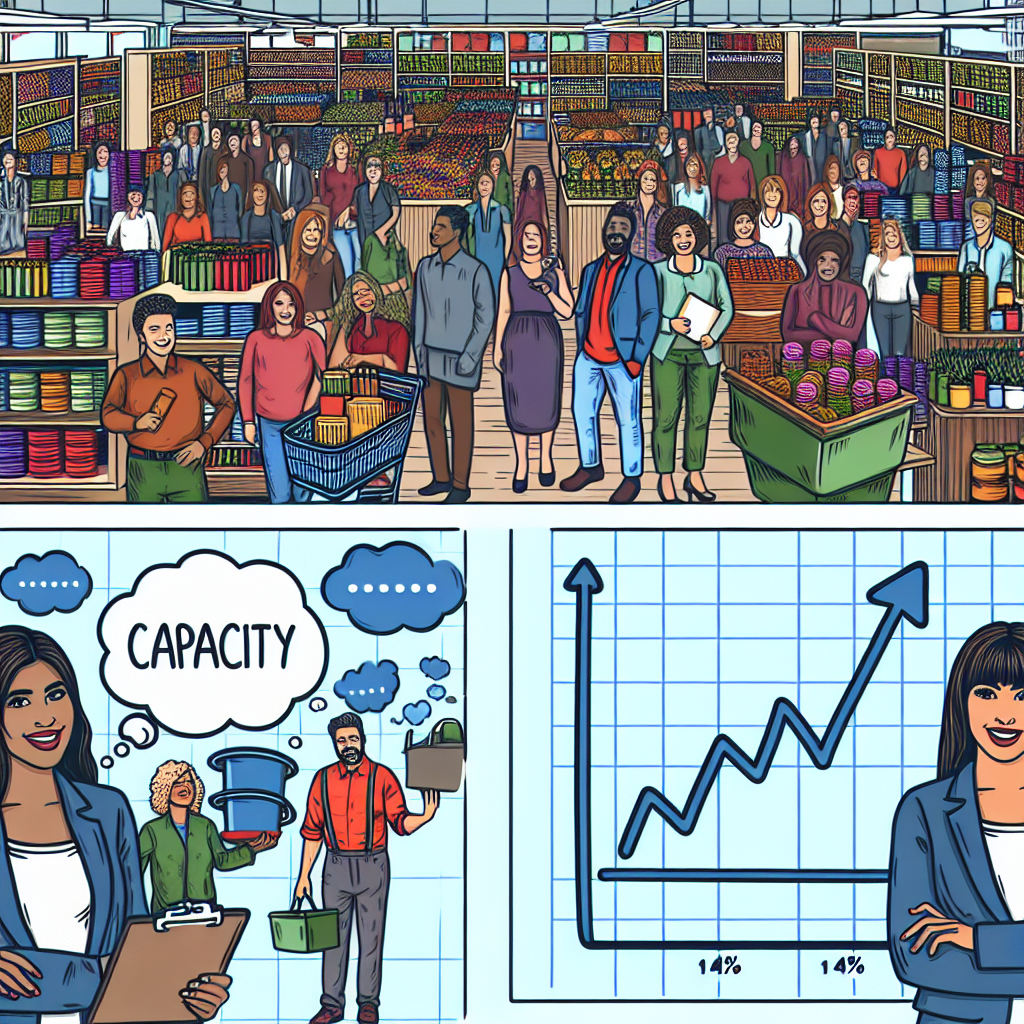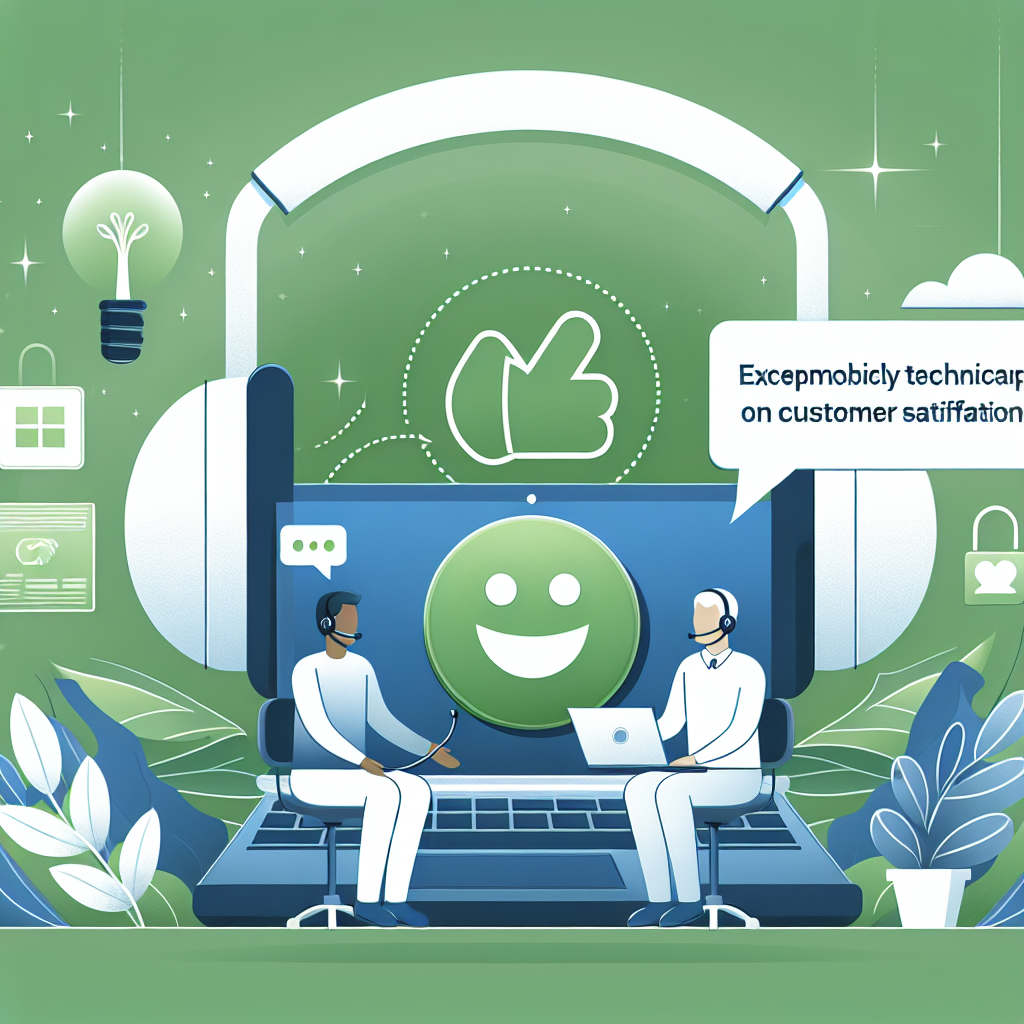Your cart is currently empty!
Tag: Satisfaction

The Role of Service Level Agreements (SLAs) in Customer Satisfaction
Service Level Agreements (SLAs) play a crucial role in ensuring customer satisfaction in any business. An SLA is a contract between a service provider and a customer that outlines the level of service that the customer can expect. It sets expectations for both parties and helps to establish a framework for measuring and monitoring performance.One of the key benefits of SLAs is that they provide clarity and transparency for both the service provider and the customer. By clearly outlining the services that will be provided, the level of performance that can be expected, and the remedies that will be available if those expectations are not met, an SLA helps to prevent misunderstandings and disputes. This helps to build trust and confidence between the service provider and the customer, leading to improved satisfaction.
SLAs also help to ensure that service providers deliver consistent and high-quality service to their customers. By setting specific performance metrics and targets, an SLA provides a benchmark against which the service provider’s performance can be measured. This helps to identify areas where improvements are needed and allows for proactive steps to be taken to address any issues before they impact the customer.
In addition, SLAs help to prioritize and allocate resources effectively. By clearly defining the services that will be provided and the level of performance that is expected, an SLA helps to ensure that resources are allocated in a way that maximizes customer satisfaction. This can help to prevent overcommitment and ensure that resources are focused on delivering the most value to the customer.
Overall, SLAs play a critical role in ensuring customer satisfaction by providing clarity, transparency, and accountability in the delivery of services. They help to build trust and confidence between service providers and customers, ensure consistent and high-quality service delivery, and prioritize and allocate resources effectively. By setting clear expectations and performance metrics, SLAs help to ensure that customers receive the level of service that they expect and deserve.

The Role of Technical Support in Customer Satisfaction
In today’s fast-paced and technology-driven world, technical support plays a crucial role in ensuring customer satisfaction. Whether it’s troubleshooting a software issue or helping a customer set up a new device, technical support teams are often the first point of contact for customers seeking assistance.One of the primary ways in which technical support contributes to customer satisfaction is by providing timely and effective solutions to problems. When a customer encounters an issue with a product or service, they expect a quick resolution to minimize any disruption to their daily activities. A responsive and knowledgeable technical support team can help address these issues promptly, ensuring that customers are able to get back to using the product or service as soon as possible.
Furthermore, technical support teams also play a key role in enhancing the overall customer experience. By providing personalized and friendly assistance, technical support representatives can build rapport with customers and make them feel valued and appreciated. This can go a long way in fostering customer loyalty and increasing the likelihood of repeat business.
In addition, technical support teams can also help improve customer satisfaction by providing proactive support and guidance. By offering tips and advice on how to optimize the use of a product or service, technical support can help customers maximize their investment and get the most out of their purchase. This proactive approach can help prevent future issues and ensure that customers have a positive experience with the product or service.
Overall, the role of technical support in customer satisfaction cannot be overstated. By providing timely and effective solutions, enhancing the customer experience, and offering proactive support, technical support teams can help ensure that customers are satisfied with their purchase and continue to be loyal advocates for the brand. Investing in a strong technical support team is essential for businesses looking to maintain high levels of customer satisfaction and drive long-term success.

The Impact of Capacity on Customer Satisfaction and Business Success
Capacity plays a crucial role in determining the success of a business and its ability to satisfy its customers. Capacity refers to the maximum amount of work that a business can handle or the maximum output that it can produce within a given period of time. It is essential for businesses to carefully manage their capacity to ensure that they can meet the demands of their customers and maintain high levels of customer satisfaction.The impact of capacity on customer satisfaction is significant. When a business has the capacity to meet the needs of its customers in a timely and efficient manner, it is more likely to satisfy them and earn their loyalty. On the other hand, if a business lacks the capacity to handle the demands of its customers, it may lead to long wait times, delayed deliveries, and poor customer service, which can result in dissatisfaction and loss of customers.
Business success is also closely linked to capacity. A business that has the right amount of capacity to meet the demands of its customers is more likely to succeed and thrive in the competitive marketplace. By efficiently managing their capacity, businesses can optimize their operations, reduce costs, and increase their productivity, which can lead to higher profits and sustainable growth.
There are several ways in which businesses can improve their capacity to enhance customer satisfaction and achieve business success. One way is to invest in technology and automation to streamline processes and increase efficiency. By automating repetitive tasks and using technology to track and manage capacity, businesses can improve their operational performance and better meet the needs of their customers.
Another way to enhance capacity is to optimize resource allocation and utilization. By carefully planning and allocating resources such as manpower, equipment, and materials, businesses can maximize their capacity and ensure that they can deliver products and services to their customers in a timely manner.
Furthermore, businesses can also consider outsourcing certain tasks or partnering with other companies to increase their capacity. By collaborating with external partners, businesses can access additional resources and expertise to expand their capacity and better serve their customers.
In conclusion, capacity plays a crucial role in determining customer satisfaction and business success. By effectively managing their capacity, businesses can improve their operational performance, meet the demands of their customers, and achieve sustainable growth. Investing in technology, optimizing resource allocation, and collaborating with external partners are some of the strategies that businesses can use to enhance their capacity and drive success in today’s competitive marketplace.

How to Improve Customer Satisfaction with Your Help Desk
Customer satisfaction is crucial for any business to thrive. One area where customer satisfaction can be greatly impacted is the help desk. The help desk is often the first point of contact for customers seeking assistance or resolution to their issues. Therefore, it is essential for businesses to focus on improving customer satisfaction with their help desk. Here are some tips on how to achieve this:1. Train your help desk staff: One of the most important factors in improving customer satisfaction with your help desk is ensuring that your staff is well-trained. Make sure they have the necessary technical skills, product knowledge, and customer service training to effectively assist customers. Regular training sessions and workshops can help keep your staff up-to-date with the latest technology and customer service best practices.
2. Provide timely responses: Customers expect quick responses when they reach out to the help desk. Ensure that your help desk staff responds to customer inquiries promptly and efficiently. Implementing a ticketing system can help prioritize and track customer requests, ensuring that no customer concern falls through the cracks.
3. Offer multiple channels of communication: In today’s digital age, customers expect to be able to reach out to businesses through various channels. Provide multiple channels of communication such as phone, email, live chat, and social media to cater to different customer preferences. This will make it easier for customers to contact your help desk and receive timely assistance.
4. Personalize the customer experience: Treat each customer as an individual and personalize their experience with your help desk. Use customer data and history to tailor your responses and recommendations to their specific needs. This personal touch can go a long way in improving customer satisfaction and building customer loyalty.
5. Collect and act on customer feedback: Encourage customers to provide feedback on their experience with the help desk. Use surveys, feedback forms, and follow-up calls to gather insights into areas for improvement. Act on this feedback by implementing changes and enhancements to better meet customer needs and expectations.
6. Measure and track customer satisfaction metrics: Monitor key customer satisfaction metrics such as Net Promoter Score (NPS) and customer satisfaction ratings to gauge the effectiveness of your help desk. Use these metrics to identify trends, areas for improvement, and success stories. Regularly review these metrics and make adjustments as needed to continuously improve customer satisfaction.
By implementing these tips, businesses can enhance customer satisfaction with their help desk and build stronger relationships with their customers. A satisfied customer is more likely to become a loyal customer and advocate for your business, ultimately contributing to long-term success and growth.

Improving Customer Satisfaction Through Service Level Agreements (SLAs)
In today’s competitive business landscape, customer satisfaction is key to retaining loyal customers and attracting new ones. One effective way to improve customer satisfaction is through the use of Service Level Agreements (SLAs). SLAs are contracts that outline the level of service that a customer can expect from a vendor or service provider. By clearly defining expectations and responsibilities, SLAs can help businesses deliver consistent, high-quality service that meets or exceeds customer expectations.One of the main benefits of using SLAs to improve customer satisfaction is that they provide a clear framework for measuring and monitoring service performance. By establishing metrics and benchmarks for service delivery, businesses can track their performance against agreed-upon standards and take corrective action when necessary. This helps to ensure that customers receive the level of service they expect, leading to higher levels of satisfaction and loyalty.
SLAs also help to establish accountability and transparency in service delivery. By clearly outlining the roles and responsibilities of both the customer and the service provider, SLAs help to prevent misunderstandings and disputes that can arise when expectations are not clearly defined. This can help to build trust and confidence in the relationship between the customer and the service provider, leading to improved customer satisfaction.
In addition, SLAs can help businesses to prioritize and allocate resources more effectively. By identifying key service levels and performance targets, businesses can focus their efforts on areas that are most important to customers, leading to improved overall service quality. This can help businesses to optimize their operations and deliver a more consistent and reliable service experience, which can ultimately lead to higher levels of customer satisfaction.
To effectively use SLAs to improve customer satisfaction, businesses should ensure that they are tailored to meet the specific needs and expectations of their customers. This may involve conducting research to understand customer preferences and priorities, and working closely with customers to develop SLAs that reflect their unique requirements. Businesses should also regularly review and update their SLAs to ensure that they remain relevant and effective in meeting changing customer needs and market conditions.
In conclusion, Service Level Agreements can be a powerful tool for improving customer satisfaction. By establishing clear expectations, measuring performance, and fostering transparency and accountability, businesses can use SLAs to deliver consistent, high-quality service that meets or exceeds customer expectations. By investing in the development and maintenance of SLAs, businesses can build stronger relationships with their customers, improve customer loyalty, and ultimately drive business growth and success.

The Impact of Excellent Technical Support on Customer Satisfaction
In today’s competitive business landscape, providing excellent technical support to customers has become a crucial factor in ensuring customer satisfaction and loyalty. With the increasing reliance on technology in our daily lives, customers expect quick and efficient resolution to any technical issues they may encounter.The impact of excellent technical support on customer satisfaction cannot be overstated. When customers encounter technical problems with a product or service, they often feel frustrated and helpless. However, when they receive prompt and effective technical support, they are more likely to have a positive experience and feel valued as a customer.
One of the key benefits of excellent technical support is that it helps to build trust and credibility with customers. When customers know that they can rely on a company to provide timely assistance and resolve any technical issues they may encounter, they are more likely to have confidence in the product or service and continue to do business with the company.
Furthermore, excellent technical support can also lead to increased customer loyalty. Customers who have a positive experience with technical support are more likely to recommend the product or service to others and become repeat customers themselves. This can help to drive word-of-mouth referrals and ultimately increase sales and revenue for the company.
Another important impact of excellent technical support is that it can help to reduce customer churn. When customers encounter technical issues and do not receive satisfactory support, they are more likely to switch to a competitor who can provide better service. By providing excellent technical support, companies can retain customers and prevent them from taking their business elsewhere.
In conclusion, the impact of excellent technical support on customer satisfaction is significant. Companies that invest in providing top-notch technical support are more likely to build trust and credibility with customers, increase customer loyalty, and reduce customer churn. By prioritizing technical support and ensuring that customers have a positive experience when seeking assistance, companies can set themselves apart from the competition and create a loyal customer base that will continue to support their business for years to come.

Measuring the Impact of Data Center Downtime on Customer Satisfaction and Retention
Data centers are the backbone of modern businesses, serving as the hub for storing, processing, and managing vast amounts of data critical to operations. However, when a data center experiences downtime, the impact on customer satisfaction and retention can be significant.Measuring the impact of data center downtime on customer satisfaction and retention is crucial for businesses to understand the true cost of such disruptions. Customer satisfaction is a key driver of customer loyalty and retention, and when a data center outage occurs, it can lead to frustration, dissatisfaction, and ultimately, loss of customers.
One way to measure the impact of data center downtime on customer satisfaction is through customer surveys and feedback. By asking customers about their experience during a downtime event, businesses can gauge the level of dissatisfaction and identify areas for improvement. Additionally, businesses can track customer retention rates before and after a downtime event to see if there is a correlation between the two.
Another measure of the impact of data center downtime on customer satisfaction is the financial cost to the business. Downtime can result in lost revenue, decreased productivity, and additional expenses to restore operations. By calculating the financial impact of downtime, businesses can better understand the true cost and make informed decisions on investments in data center infrastructure and redundancy.
Furthermore, businesses can also measure the impact of data center downtime on customer satisfaction through social media monitoring and online reviews. Customers are quick to share their experiences on social media platforms, and negative reviews can have a lasting impact on a business’s reputation. By monitoring online sentiment during and after a downtime event, businesses can assess the level of customer dissatisfaction and take steps to address any issues.
In conclusion, measuring the impact of data center downtime on customer satisfaction and retention is essential for businesses to understand the true cost of disruptions and make informed decisions on how to prevent future incidents. By tracking customer feedback, financial impact, and online sentiment, businesses can better mitigate the effects of downtime and maintain high levels of customer satisfaction and retention.
